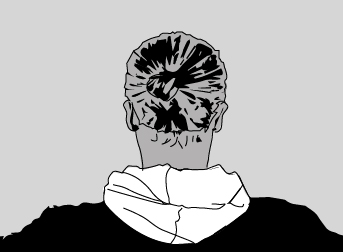
ROBERTO MORA
Dopo la grafica e la pittura degli esordi, Mora negli anni ’90 abbraccia con entusiasmo pratiche e teorie del design radicale. Da questo momento, la galleria Dilmos di Milano, diverrà per lui una palestra progettuale e luogo ideale per presentare i suoi “pezzi unici”: oggetti/sculture in bilico tra funzione e distrofie della forma. In quegli anni Mora si esercita ed esplora le possibilità espressive del ferro al quale accosta il legno e i sassi di fiume incontrati nei suoi abituali pellegrinaggi lungo i fiumi appenninici. Tra il ’98 e il 2004 realizza numerosi “pezzi” e progetti di sedie, troni e contenitori: il trono “ferruccio”, la poltroncina “oil” ricavata dai barili di prodotti petroliferi, le sedie “chip chair”, minuziose ed eleganti sedute, il contenitore “sba dan”, un progetto neo futurista dove la forza invisibile delle calamite fa da tramite a composizioni ardite. Nel 2004 partecipa alla mostra “Radical Design” curata da Gianni Pettena che documenta in un piccolo e ricco volume l’evoluzione del design dagli anni 60 ad oggi: Gianni Osgnach, Roberto Mora, Alessandro Ciffo, Andrea Salvetti i fratelli Campana e una decina di altri rappresentano l’ultima generazione di designers autoproduttori. Nel 2005 è invitato ad “Art of Italian Design”, mostra internazionale curata da Alessandro Mendini. La fine del 2006 coincide con il viaggio in Indonesia. Qui, Mora, raccoglie suggestioni ed esperienze che avranno notevole influenza sulla nascita di “tubismo”. Nel 2008 presenta la nuova collezione “Carte & Cartocci”: è il ferro di nuovo protagonista che sogna di poter volare simulando la leggerezza e la fragilità della carta. Nel 2010, partecipa alla mostra “Quali cose siamo” curata da Alessandro Mendini e visibile per un intero anno al museo della Triennale di Milano. Nell’aprile dello stesso anno presenta alla Dilmos “cartocciona”, una poltrona in ferro sagomata e scolpita come une scolpita blocco di roccia, mentre nella successiva personale “Giocoincasa” si cimenta con nuovi linguaggi realizzando “Cosmocook” e “Verticalcook”, due opere scultura destinate agli spazi esterni. Nel 2011 presenta “Babel”, un nuovo contenitore cilindrico che prosegue le tracce stropicciate dei precedenti lavori, questa volta in una veste di colore più sofisticato.
After the graphics and painting of the beginning, Mora in the 90s enthusiastically embraces practices and theories of radical design. From this moment, the gallery Dilmos of Milan, will become for him a gym design and an ideal place to present its “unique” objects / sculptures in the balance between function and form dystrophies. In those years, Mora is exercised and explore the expressive possibilities of iron which combines wood and river stones met in its regular pilgrimages along the Apennine rivers. Between ’98 and 2004 he made several “pieces” and projects of chairs, thrones and containers: the throne “ferruccio,” the chair “oil” derived from the barrels of petroleum products, the chairs “chip chair”, a meticulous and elegant seating , the container “sba dan”, a project where the futuristic neo invisible force of the magnets acts as an intermediary in daring compositions. In 2004 he participated in the exhibition “Radical Design” curated by Gianni Pettena that documents in a small volume and rich the evolution of design from the 60s to today: Gianni Osgnach, Roberto Mora, Alexander Ciffo, Andrea Salvetti the Campana brothers and a dozen others represent the latest generation of designers power producers. In 2005 he was invited to “Art of Italian Design”, international exhibition curated by Alessandro Mendini. The end of 2006 coincides with the trip in Indonesia. Here, Mora, collects memories and experiences that will have considerable influence on the birth of “tubismo.” In 2008, presents the new collection “Cards & Cartocci” is the new protagonist of iron who dreams of being able to fly by simulating the lightness and fragility of the paper. In 2010, he participated in the “What things are” curated by Alessandro Mendini and visible for an entire year at the Museum of the Triennale in Milan. In April of the same year shall submit to the Dilmos “cartocciona” an iron armchair shaped and sculpted as each carved block of rock, while the next staff “Giocoincasa” engages with new languages by making ‘Cosmocook “and” Verticalcook, “two works intended for outdoor sculpture. In 2011 presents “Babel,” a new cylindrical container that continues traces wrinkles of previous work, this time in a robe of more sophisticated color.

